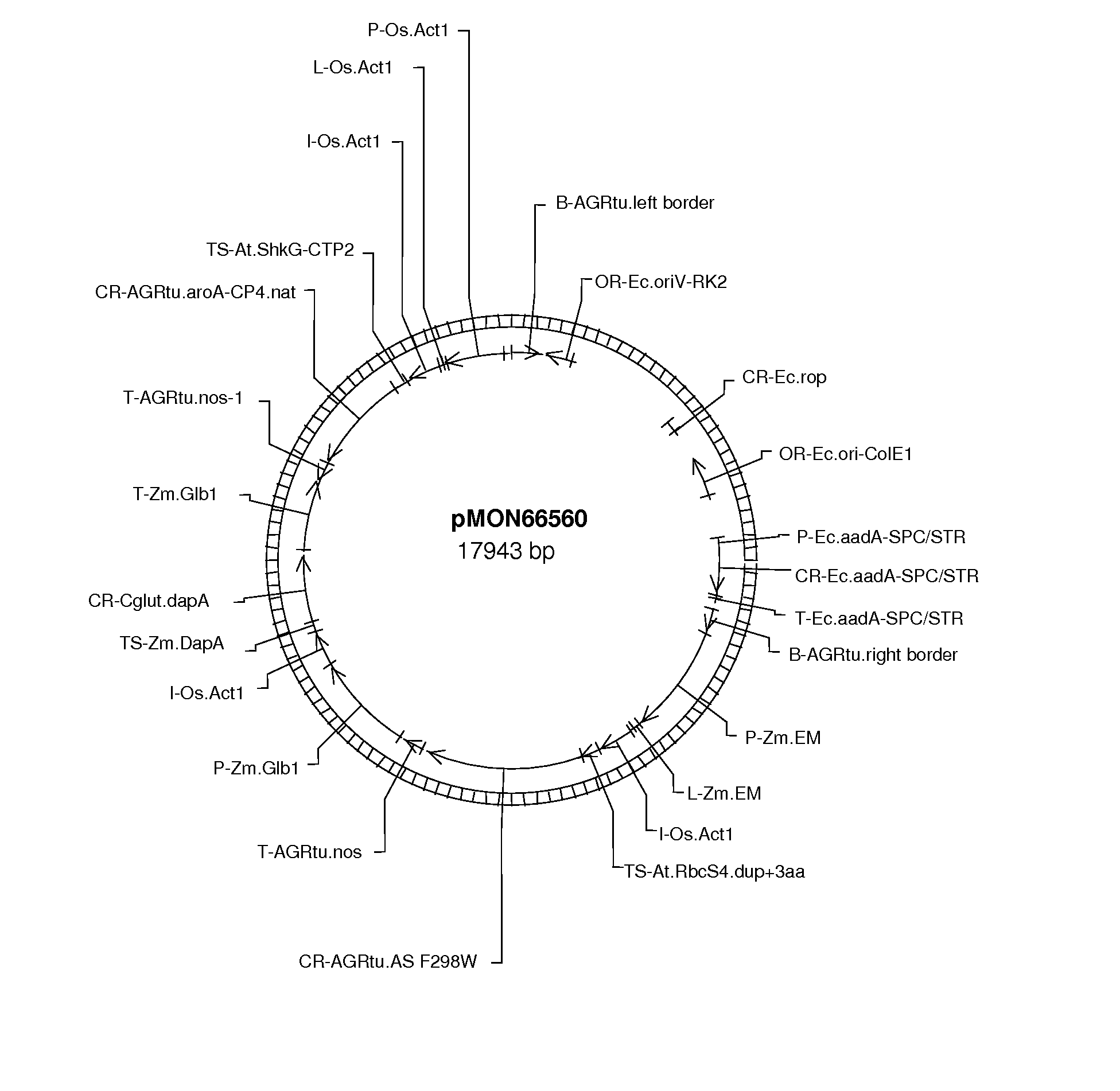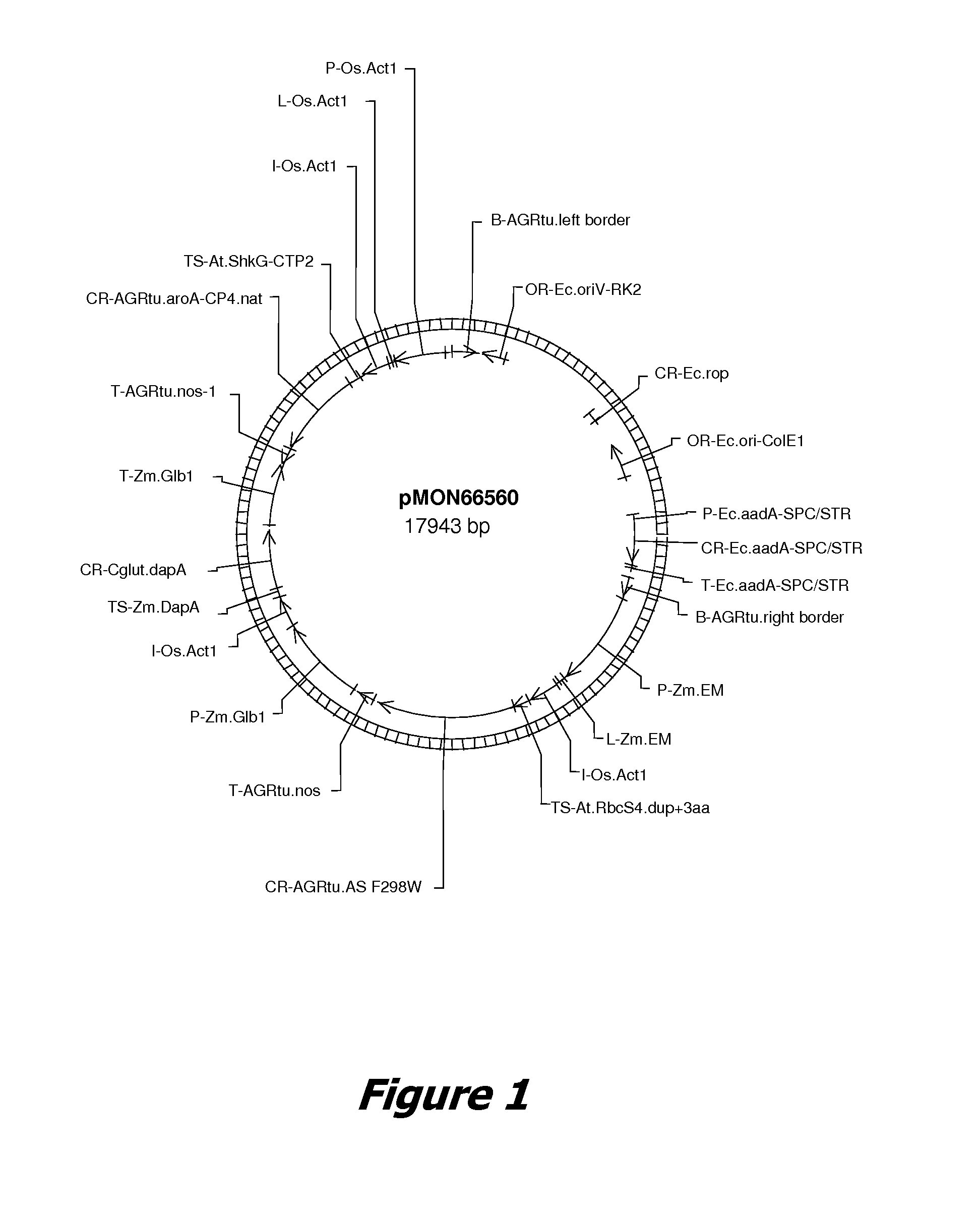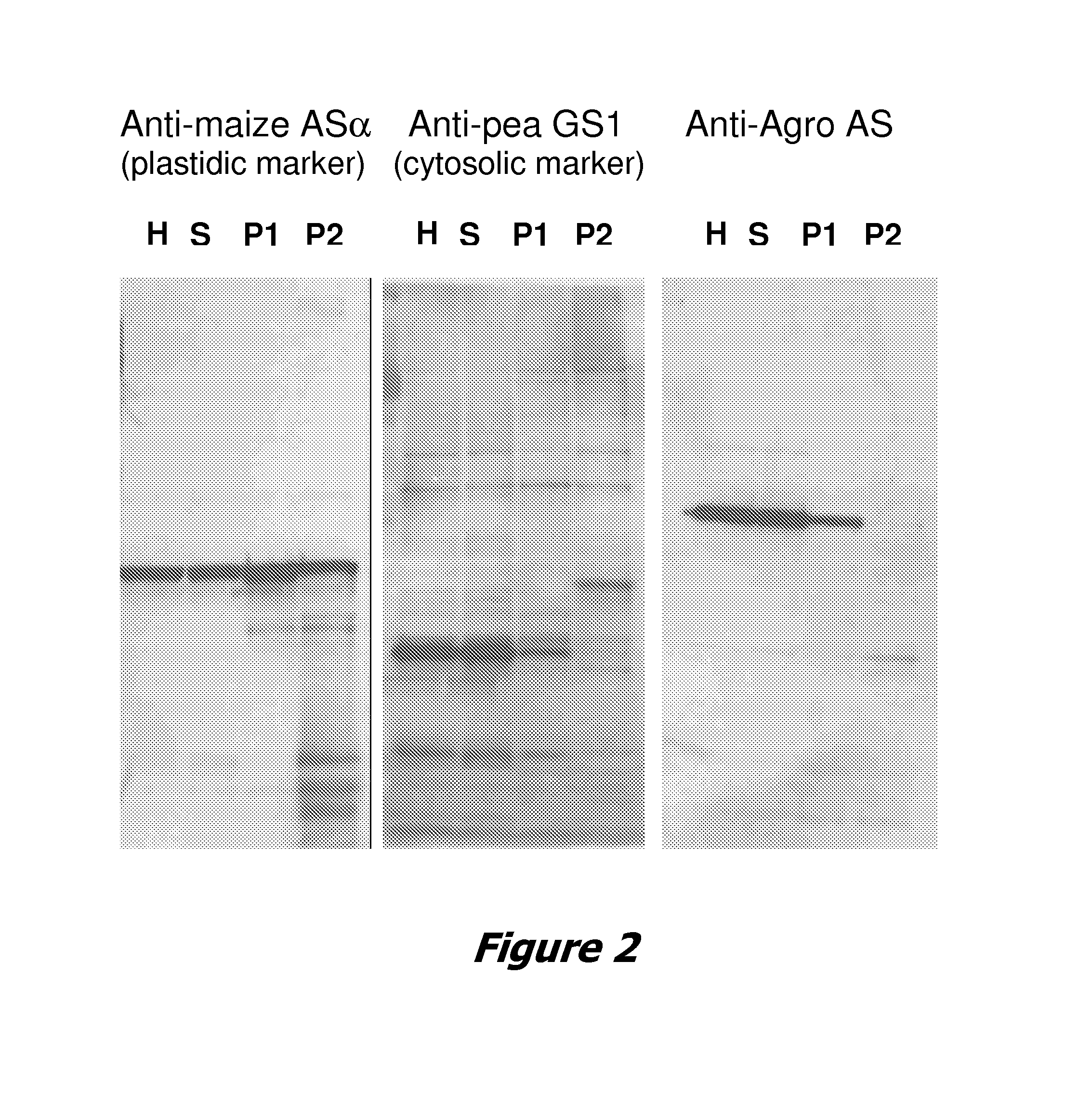Production of high tryptophan maize by chloroplast targeted expression of anthranilate synthase
a technology of anthranilate and chloroplast, which is applied in the direction of peptides, plant/algae/fungi/lichens ingredients, enzymology, etc., to achieve the effect of increasing the free tryptophan content of monocotyledonous plants
- Summary
- Abstract
- Description
- Claims
- Application Information
AI Technical Summary
Benefits of technology
Problems solved by technology
Method used
Image
Examples
example 1
Localization of an Anthranilate Synthase Comprising a CTP1 Chloroplast Transit Peptide
[0179] This example demonstrates that the protein product of a transgene encoding a CTP1 chloroplast transit peptide fused to the amino terminus of an Agrobacterium anthranilate synthase allele is not targeted efficiently to embryo plastids in transgenic maize.
[0180] The plant transformation vector pMON66560 (FIG. 1) encodes a fusion protein comprising the chloroplast transit peptide sequence from the Arabidopsis rubisco small subunit gene, CTP1 (encoded by SEQ ID NO: 19) fused to the amino-terminus of AgroAS(F298W (encoded by SEQ ID NO: 201), and driven by a maize embryo-specific promoter (ZmEM).
[0181] To isolate the plastid fraction from embryos of immature kernels from transgenic maize plants, several ears were harvested at 25-27 days after pollination (DAP). The homozygous F3 transgenic maize plants contained the plant transformation vector pMON66560 (FIG. 1).
[0182] Approximately 2.5 g of e...
example 2
Additional Transit Peptide Sequences for Localization of Anthranilate Synthase
[0186] This example describes the design of the various CTP sequences that were incorporated in the construction of the protoplast transfection vectors containing the maize anthranilate synthase-green fluorescent protein (Zm-AS::GFP) fusions and the control::GFP fusions detailed in Example 3; and which were evaluated in the transient expression assay systems which are described in Example 4.
TABLE 1CTP variantsSEQIDCTP NameNO:Brief Description of CTPAt-CTP2(C / M)1At-CTP2 (Arabidopsis thaliana 5-(enolpyruvyl)shikimate-3-phosphate synthase) with modified cleavagesite (C / M)At-CTP2(E / K)2At-CTP2 with native cleavage site (E / K)At-CTP2(E / K) + 103At-CTP2 + 10 amino acids from mature ArabidopsisEPSPS synthaseAt-CTP2(E / K) + 54At-CTP2 + 5 amino from mature Arabidopsis EPSPSsynthaseZm-ASA1-CTP5Zm-ASA1 CTP (Zea mays anthranilate synthase α1subunit)Zm-ASA1-CTP + 206Zm-ASA1 CTP + 20 amino acids from mature Zea maysanthr...
example 3
Construction of Transformation Vectors
[0187] This example describes the construction of the protoplast transfection vectors containing the maize anthranilate synthase::green fluorescent protein (Zm-AS::GFP) fusions and the control::GFP fusions that were used in the transient protoplast and embryo assays described in Example 4. Two general strategies were employed to construct these vectors.
[0188] The first strategy involved PCR amplification of the CTP-AS coding sequence with the introduction of a restriction site to facilitate the addition of the GFP coding sequence. The first strategy is exemplified by the construction of pMON78824 (FIG. 3). The plasmid pMON78824 was constructed by PCR amplification of a DNA fragment containing the Zm-ASA2 CTP-coding sequence using the plasmid pMON66574 as a template. BamHI restriction sites were incorporated into the primers AS25 and AS 3′ (SEQ ID NOs: 63 and 61, respectively) to allow insertion of the fragment in frame with the GFP coding sequ...
PUM
| Property | Measurement | Unit |
|---|---|---|
| total volume | aaaaa | aaaaa |
| total volume | aaaaa | aaaaa |
| rupture pressure | aaaaa | aaaaa |
Abstract
Description
Claims
Application Information
 Login to View More
Login to View More - R&D
- Intellectual Property
- Life Sciences
- Materials
- Tech Scout
- Unparalleled Data Quality
- Higher Quality Content
- 60% Fewer Hallucinations
Browse by: Latest US Patents, China's latest patents, Technical Efficacy Thesaurus, Application Domain, Technology Topic, Popular Technical Reports.
© 2025 PatSnap. All rights reserved.Legal|Privacy policy|Modern Slavery Act Transparency Statement|Sitemap|About US| Contact US: help@patsnap.com



